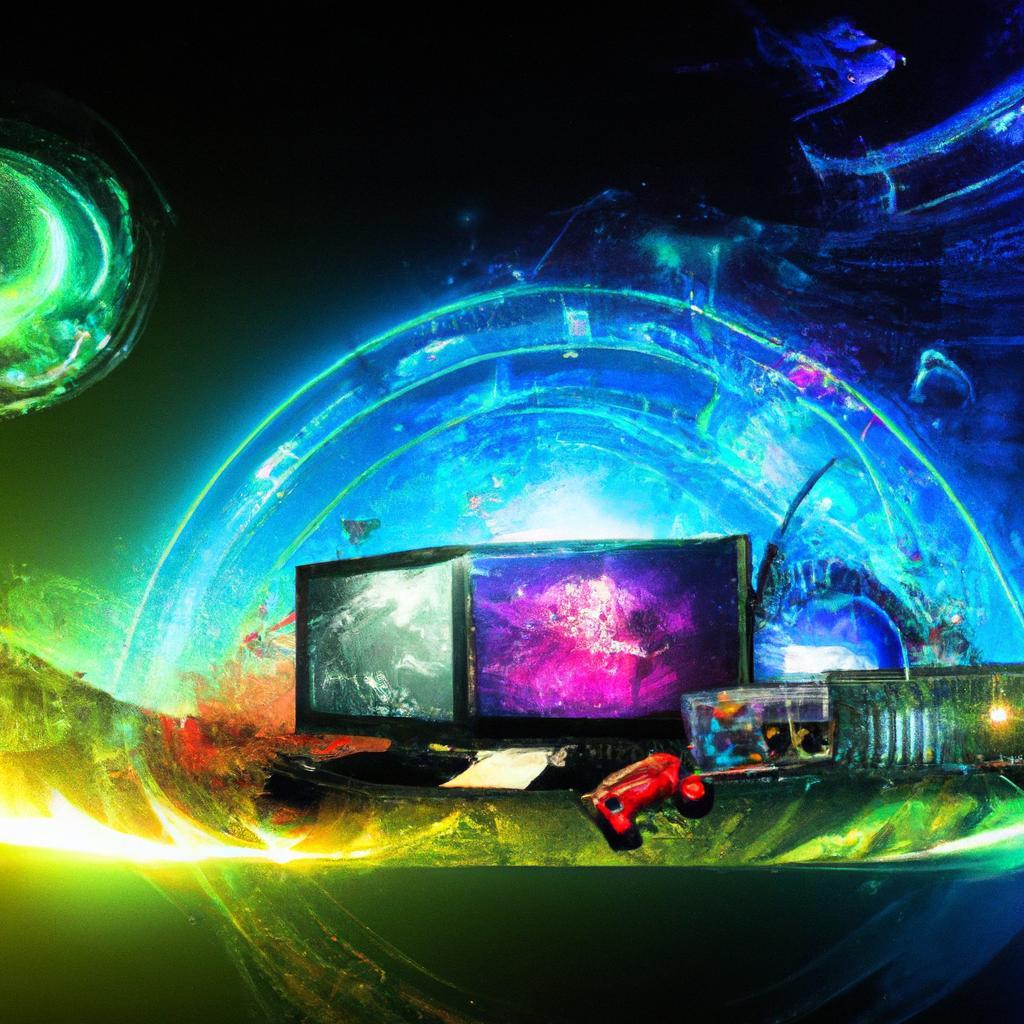
The Latest Innovations in Game Graphics Technology
In the ever-evolving world of gaming, developers are constantly pushing the boundaries of technology to create more immersive and visually stunning experiences for players. From the breathtaking landscapes of open-world environments to the intricate details of character models, the latest innovations in game graphics technology promise to revolutionize the way we interact with virtual worlds. Join us as we delve into the cutting-edge advancements that are shaping the future of gaming visuals.
Table of Contents
- Cutting-Edge Features in Real-Time Ray Tracing Technology
- Revolutionizing Game Environments with AI-Driven Graphics Enhancements
- Enhancing Player Immersion through High Dynamic Range (HDR) Rendering Techniques
- Next-Level Texture Detailing and Anti-Aliasing Innovations
- Q&A
- To Conclude
Cutting-Edge Features in Real-Time Ray Tracing Technology
Real-time ray tracing technology has been continuously evolving, bringing cutting-edge features to enhance game graphics like never before. One of the most exciting innovations is the incorporation of global illumination, allowing for more realistic lighting and shadow effects in games. This feature contributes to creating an immersive gaming experience by accurately simulating how light interacts with different surfaces.
Another groundbreaking feature in real-time ray tracing technology is path tracing, which calculates the path of light rays as they bounce around a scene. This technique results in more natural-looking reflections, refractions, and ambient occlusion in games, further enhancing the visual quality. With these advancements, game developers can deliver stunning visuals that blur the line between reality and virtual worlds, setting a new standard for graphics in the gaming industry.
Revolutionizing Game Environments with AI-Driven Graphics Enhancements
Imagine diving into a virtual world where every detail feels incredibly lifelike, from the way light interacts with surfaces to the natural movements of characters and objects. Thanks to AI-driven graphics enhancements, this level of realism is now within reach for game developers. By harnessing the power of machine learning algorithms, games can now dynamically adjust lighting, textures, and animations in real-time, creating a truly immersive experience like never before.
One of the key benefits of AI-driven graphics enhancements is the ability to adapt to individual player preferences. By analyzing player behavior and feedback, AI can make instant adjustments to the game environment to enhance gameplay and overall enjoyment. This level of personalization not only improves player engagement but also opens up endless possibilities for new and innovative game experiences.
Enhancing Player Immersion through High Dynamic Range (HDR) Rendering Techniques
One of the most exciting advancements in game graphics technology in recent years is the implementation of High Dynamic Range (HDR) rendering techniques. This cutting-edge technology allows for a wider range of colors and contrasts to be displayed on screen, resulting in more vibrant and realistic visuals that truly immerse players in the game world.
By utilizing HDR rendering, developers can create more dynamic lighting effects, richer textures, and more detailed environments that enhance the overall gaming experience. With HDR, players can enjoy stunning sunsets, realistic shadows, and lifelike reflections that make the game world feel more alive than ever before. This technology truly has the potential to revolutionize the way games are played and create a new standard for immersive gaming experiences.
Next-Level Texture Detailing and Anti-Aliasing Innovations
The latest advancements in game graphics technology have brought about a new era of visual fidelity, with at the forefront. Game developers are now able to create immersive worlds that are more realistic and lifelike than ever before.
With the implementation of cutting-edge techniques such as physically based rendering and advanced shader technology, games are able to achieve unprecedented levels of detail and realism. This allows for more vibrant colors, smoother edges, and overall higher quality graphics that truly push the boundaries of what is possible in the world of gaming.
Q&A
Q: What are some of the latest innovations in game graphics technology?
A: The latest innovations in game graphics technology include real-time ray tracing, advanced AI-driven graphics rendering, and the use of machine learning to enhance visual effects.
Q: How does real-time ray tracing improve game graphics?
A: Real-time ray tracing allows for more realistic lighting and reflections in games, making virtual worlds feel more immersive and lifelike.
Q: How is AI being used in game graphics technology?
A: AI is being used to automatically enhance graphics by upscaling textures, reducing rendering times, and even predicting player behavior to optimize performance.
Q: In what ways can machine learning improve visual effects in games?
A: Machine learning can be used to create more detailed textures, realistic animations, and dynamic environments that react to player actions in real-time.
Q: What impact do these advancements in game graphics technology have on the gaming industry?
A: These advancements are raising the bar for visual quality in games, pushing developers to create more immersive and visually stunning experiences for players.
To Conclude
As technology continues to advance at an unprecedented rate, the world of game graphics is constantly evolving. From photorealistic textures to cutting-edge lighting techniques, the latest innovations in game graphics technology are pushing the boundaries of what is possible in the world of gaming. As developers strive to create more immersive and visually stunning experiences for players, we can only imagine what the future holds for the world of game graphics. So buckle up, gamers, because the ride is only going to get more exciting from here. Stay tuned for the latest updates on the ever-changing landscape of game graphics technology.

